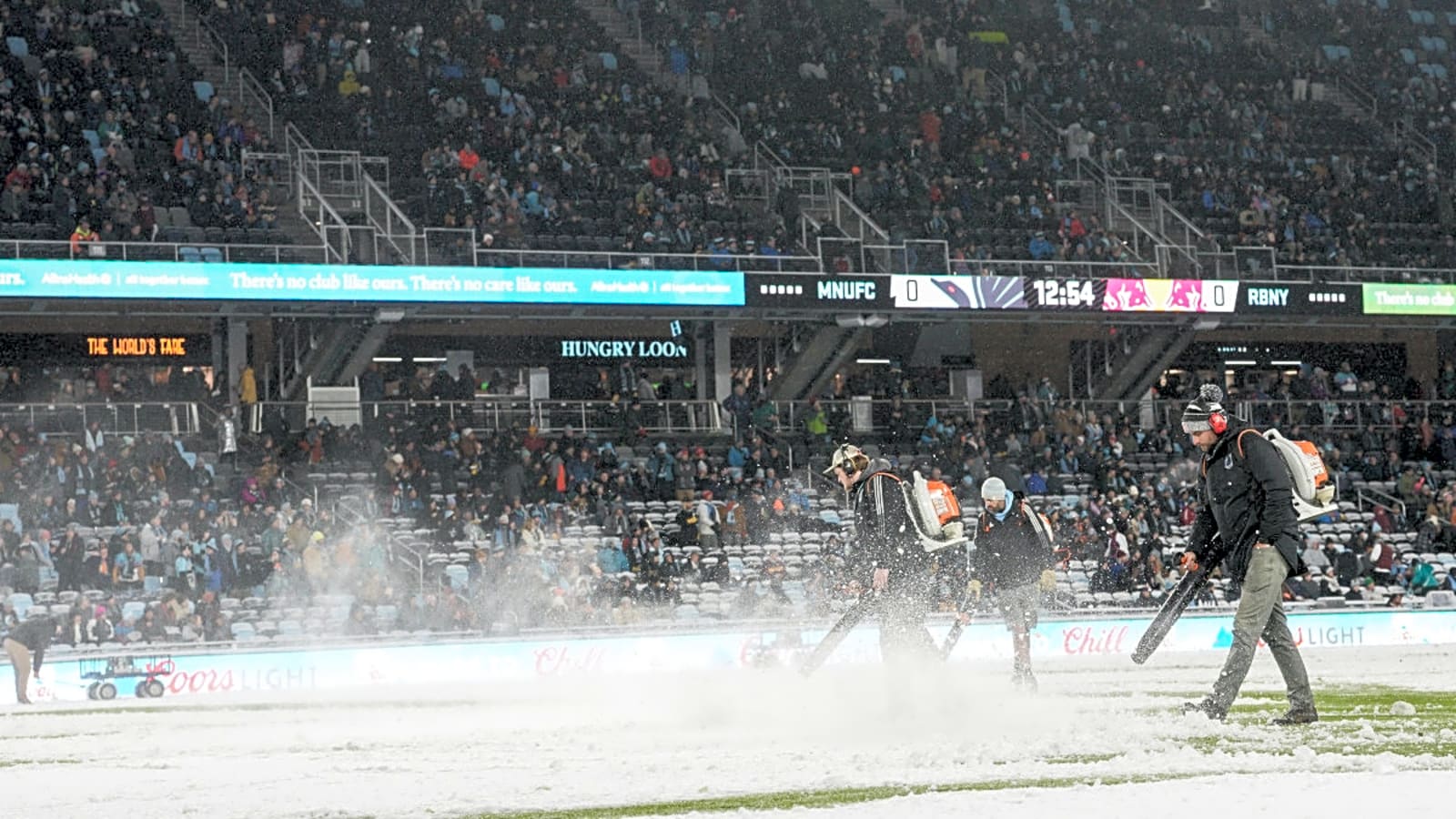
You may have seen reports over the past couple months of Major League Soccer exploring the possibility of flipping its calendar to align more with the European soccer schedule. The immediacy of any switch came to a halt Thursday when the league released a statement saying talks about a change have been tabled while a "second phase of exploration" is underway. .
So, for the non-soccer fan out there, what is the league talking about and how would this impact Minnesota United? Let's dive in.
What is being talked about?
Over the past several years, the league and its stakeholders have been exploring the idea of flipping the schedule. Currently, MLS begins its season at the end of February and plays, with sporadic breaks due to international play, through the regular season finale in early October. The playoffs, featuring 16 of the 30 teams in the league, stretches from mid-October until the MLS Cup Final in early December. There is no doubt, it's a long season.
What the league is exploring is transitioning to start the season in mid-August and playy until mid-December before taking a two-month break. Play would resume in mid-February, with the title game set for May. It would be a switch to better align with European soccer, which generally plays from late August until mid-May.
According to reports, league executives think a change could help clubs in the transfer market. Currently, a wide majority of the global soccer transfer business is done in the summer. By nature of its offseason being the winter, MLS teams typically do the majority of transfer business in the winter, when most other teams are in the middle of their seasons and typically don't want to sell players.
MLS does have a summer transfer window that opens in July and closes in early August, nearly a full month before the European transfer window closes. That means if a European club comes in for an MLS player in August, the MLS side has no ability to fill a hole on the roster right when they're making a playoff push.
That type of a monumental switch comes with a number of challenges. Chief among them is the weather.
MLS features three Canadian teams, two of which play outdoors, as well as teams in Minnesota, New York (2), Boston, Philadelphia, Colorado, Chicago, Utah, Cincinnati, Columbus, Washington D.C., Kansas City, St. Louis, Seattle and Portland. All of those markets encounter cool and even sub-freezing temps between October and March.
All of those teams play in stadiums that don't have roofs, and thus their ability to protect the field and fans from the elements is limited.
That last point is key because MLS is a league that is unlike most American sports leagues, in that it is still heavily reliant on the gate. Flipping the calendar would either ask fans of teams in those climates to sit outside in sometimes brutal conditions or ask teams to go on months-long stints where they don't play home games.
Forgoing the summer months, when weather conditions are typically much better for the game and attendance, wouldn't be ideal.
Another conundrum league stakeholders must grapple with is getting eyeballs on the sport. It's no secret soccer isn't on the top of many American sports fans' minds. Flipping the calendar would, conceivably, make that even more difficult.
The league plays the bulk of its schedule in direct competition against Major League Baseball. Where the problem lies right now, is that the end of the regular season and the playoffs go head-to-head with the NFL and college football.
A flip would see the league begin it's schedule going head-to-head with the NFL, taking a two-month break, then coming back and having the end of the season and playoffs go head-to-head with the NBA and NHL playoffs.
So, where do things stand now?
When reports started surfacing that the league was considering a switch, it appeared the timeline to enact such a change would revolve around the 2026 World Cup, which is being hosted by the United States, Canada and Mexico. It was seen as a perfect chance to capitalize on the increased attention on the sport.
As of Thursday, that timeline has now been pushed back to at least 2027. MLS announced its Board of Governors had authorized a "second phase of exploration into a potential move to the international soccer calendar."
A statement from Major League Soccer. pic.twitter.com/xS5FNjjcry
— MLS Communications (@MLS_PR) April 10, 2025
In the announcement, the league stated it would include additional consultation with key stakeholders while developing a "comprehensive transition plan."
The Athletic's Paul Tenorio reported Thursday that in a meeting Thursday, each of the league's 30 teams were given an opportunity to voice their position on a potential switch but that no vote was taken on the discussion.
How does this impact Minnesota United?
In the now, it doesn't, as nothing has been decided. If a switch does happen, that could force massive changes to the club.
It doesn't need explaining to the Minnesota reader that playing outdoors in Minnesota in November, December and February isn't ideal.
Since joining the league, Minnesota United have never opened at home, instead starting every season on the road, including in the delayed start to the 2021 season.
On Feb. 2 2022, U.S. Soccer hosted a game against Honduras at Allianz Field and the air temperature at kickoff was 5 degrees Fahrenheit, making it the coldest game in U.S. Soccer history and one of coldest ever played in world soccer. Two members of the Honduran team suffered from hypothermia.
Would the team be able to keep a grass field if a majority of the schedule was played in the winter? Would that necessitate a switch to turf? Or, would the team have to find a way to modify Allianz Field and put a roof on it? Who would pay for that?
All of these are just some of the questions that the league and its stakeholders are wrestling with as it prepares to potentially take on a drastic shift for soccer in the United States.
More must-reads:
- Coach flips script for aspiring USMNT players
- Preseason breakout puts Arsenal teenager in the spotlight
- The '2024-25 NFL passing-yard leaders' quiz
Breaking News
Trending News
Customize Your Newsletter
 +
+
Get the latest news and rumors, customized to your favorite sports and teams. Emailed daily. Always free!








